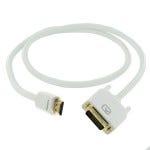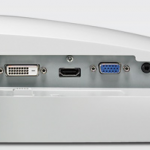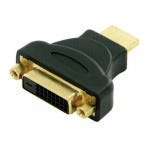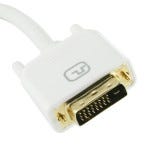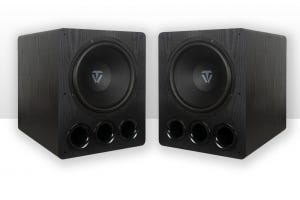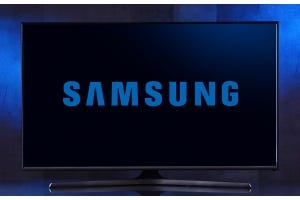At the back of our devices are often many inputs of varying shapes and sizes. You may know what they all are or you may not. You may even think they all have to be filled to make your device work. Not so! The variety of input options is to give you choice. Because everyone has different pieces of equipment of varying age and ability that need to be connected to even more pieces of equipment, there is not one solution or input that is universal.
DVI, (Digital Visual Interface) is a video only display interface which is used to connect a video source such as your computer, DVD or Bluray player to a display source such as your television or computer monitor. In the market since 1999, DVI has three configurations; DVI-D which is digital only, DVI-A which is analog only, or DVI-I is the combination of digital and analog. DVI is typically supported by computer devices, however you will notice DVI on some televisions also.
If you find yourself with one component using DVI and another using HDMI, cables and adapters are available to ensure an easy connection is still possible. Commercially available HDMI to DVI cables and adapters allow you to still use your older DVI devices, and connect to your new equipment. Note however that when adding an HDMI adapter to a DVI cable, this doesn’t automatically allow you to have audio. It merely allows you to plug your DVI digital signal into a digital input. In this scenario, you would need to use a set of RCA cables (red & white)in the RCA inputs to produce the sound. Only HDMI has both audio and video. Same result, just a different range of cables to do the job.
View Selby's large range of leads, cables and adapters to suit your pro-audio equipment online.


